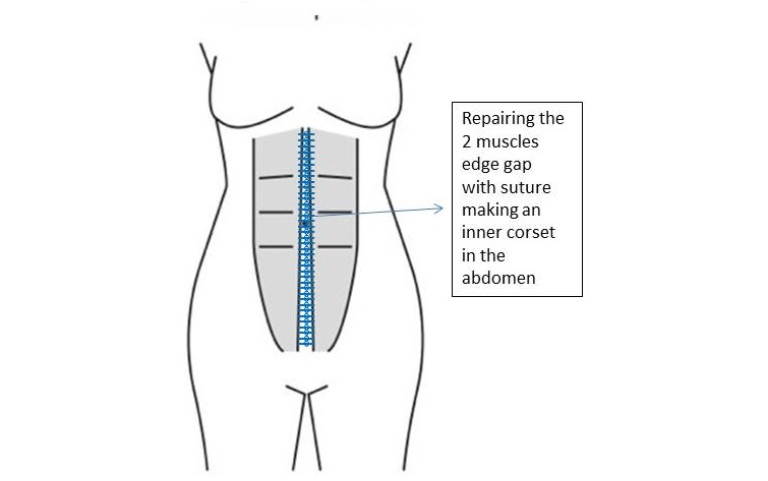What is Robotic Rectus Diastasis Surgery?


Before we discuss about Robotic Rectus Diastasis Surgery , let’s understand what Rectus Diastasis and Rectus Plication is.
What does rectus diastasis lead to? (And why rectus plication helps)
The rectus abdominal muscles play an important role in the stability of the spine. Depending on the degree of the rectus diastasis, it can lead to a vicious posture, spine problems, back pains and aches, slipped disc, pelvic floor muscle dysfunction etc.
Rectus plication can effectively restore the connection of the muscles in the midline of your abdomen and the function of the core muscles, providing a balance between the anterior and posterior abdominal wall muscle and also can improve the cosmetic appearance of the abdomen.
Who are the suitable candidates for the robotic core muscle repair?
It is a minimally invasive procedure suitable for those without any over redundant skin (excess skin), or for those who do not want to have any long scars in the abdomen but need to repair the core muscles.
What are the other options?
There are other types of options besides the robotic technique to repair the rectus diastasis. One other option is open method surgery. This method typically requires making a vertical incision in the midline of the abdomen from 5 cm above and 5cm below the umbilicus which may leave quite an obvious vertical scar.
Mini abdominoplasty and endoscopic abdominoplasty are methods that will leave a scar on the bikini line depending on how much skin has to be removed.
For a full abdominoplasty, this procedure will remove and tighten a large amount of lower abdomen skin, leaving a bikini line scar from the right to the left side of the hips and a new belly button.
What are the advantages of this Robotic Surgery?
Robotic surgery is becoming the preferred method of Minimally Invasive Surgery (MIS) in many surgical fields.
Compared to traditional open surgery, MIS results in less tissue trauma, a lower rate of infection, faster recovery, and smaller scars.
How is the scar like for Robotic Surgery?
There are 4 incisions for this robotic surgery and the scars are between 0.5 to 1.5 cm long.
What is the recovery time?
For this robotic surgery, a minimum 2 night stay is required. Patients are advised not to move around too much for the first 1 to 2 weeks. There may be some slight swelling and bruising that will disappear within the first few days.
Stitches are removed usually around 7 to 10 days after surgery. Patients are typically recommended to return back to physical sporting activities 4 months after their surgery.
Our Clinic Location
Mount Elizabeth Novena Specialist Centre
#10-26/27,
38 Irrawaddy Road
Singapore 329563


